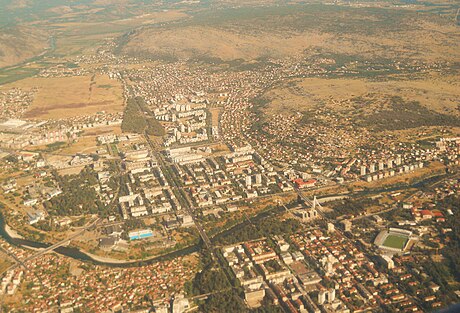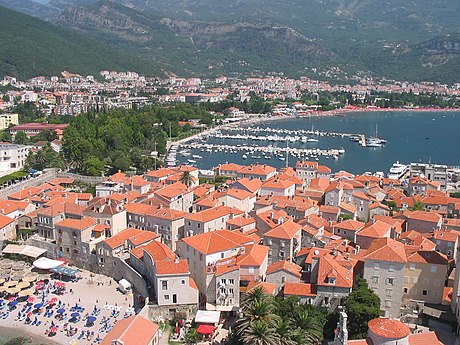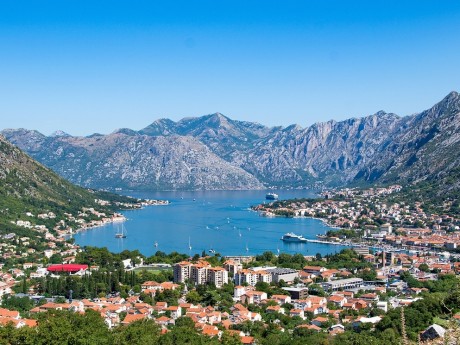Montenegro: Podgorica & Budva
This hidden gem of the Balkans with enchanting cities of Podgorica, Budva, and Kotor is a must see. In Podgorica, the vibrant capital, modernity blends with the country's history. Explore its quaint streets, historic sites such as the Clock Tower, and enjoy the regional food in welcoming cafés. Be captivated by Budva, the coastal paradise with pristine beaches along the Adriatic Sea's azure shore.
Read more
This hidden gem of the Balkans with enchanting cities of Podgorica, Budva, and Kotor is a must see. In Podgorica, the vibrant capital, modernity blends with the country's history. Explore its quaint streets, historic sites such as the Clock Tower, and enjoy the regional food in welcoming cafés. Be captivated by Budva, the coastal paradise with pristine beaches along the Adriatic Sea's azure shore. The Old Town with its maze of winding alleyways, ancient protective walls and historical structures provide a window into the area's past. here the bustling nightlife, cultural attractions and beautiful beaches will help you to unwind. The stunning Bay of Kotor surrounded by imposing mountains is only 30 minutes drive away. The medieval Old Town is a maze of atmospheric streets and squares, adorned with churches and palaces that narrate centuries of history. Waterviews strives to offer accommodation options within walking distance of water and/or in an area of touristic interest. Our prices include taxes (but excludes local tourist taxes). Customize your trip to your personal preferences with optional activities (hit the “Add Activities’’) or change hotels, etc. Contact us for customization at no extra cost at: Service@waterviewstravel.com
Destinations
- Podgorica
- Budva
Itinerary
Podgorica

Podgorica (Montenegrin: Подгорица) is the capital of Montenegro.
Read more
Podgorica (Montenegrin: Подгорица) is the capital of Montenegro.
Additional Information
Besides being the capital of Montenegro, Podgorica is also the country's largest city, having a population of some 180,000 people. The city is situated in central Montenegro, in the scarce Montenegrin lowlands between the Dinaric Alps and Lake Scutari.
The Podgorica area has been continuously inhabited since the Illyrian and Roman eras, with settlement on the site of today's Podgorica being firmly established during Ottoman Empire rule. Podgorica was reincorporated in Montenegro in 1878, when the city started to take a more European shape. Nazi and Allied bombings during World War II destroyed much of the historical Ottoman and Montenegro-era Podgorica architecture, and the city was reborn as the capital of Montenegro in Socialist Yugoslavia (SFRY). The city was then rebuilt and expanded in a manner typical of Eastern bloc countries, so it is mostly a modern planned city, and by no means a principal sightseeing destination.
While not a typical European eye candy, the is city definitely worth visiting, owing to its interesting mix of old and new, its café culture and nightlife, and its laid back Mediterranean atmosphere. Both Montenegrin coastal cities (Bar, Budva and Tivat) and its mountain resorts are within one hour's drive from the city and Tivat one hour and 45 minutes, so it is an excellent starting point for day trips to anywhere in Montenegro.
© Sourced from Wikivoyage
Budva

Budva is a coastal tourist resort in Montenegro. It is often called "Montenegrin Miami", because it is the most crowded and most popular tourist resort in Montenegro, with beaches and vibrant nightlife.
Read more
Budva is a coastal tourist resort in Montenegro. It is often called "Montenegrin Miami", because it is the most crowded and most popular tourist resort in Montenegro, with beaches and vibrant nightlife.
Additional Information
Budva is on the central part of Montenegrin coast, called "Budvanska Rivijera". It has developed around a small peninsula, on which the old town is situated. It is by far most visited destination in Montenegro, attracting mostly domestic, Russian, Serbian and other Eastern European tourists with an old town, bars and nightclubs, and beaches mostly consisting of small rocks. It is base for mass tourism, while in its near vicinity there are luxury resorts such as Sveti Stefan and Miločer.
There are as many as 35 beaches in the Budva area, mostly rock and a little sand (8 beaches are marked with blue flags).
During the summer in particular, the day and night-life offers opportunities to enjoy theatre plays and performances, music events and entertainment programs.
Many nightclubs use go-go dancers to attract customers, and families might be offended by the open display of almost-naked girls in the street. There is mainly one street, the main promenade, where all the action happens.
Budva appears to be undergoing poorly planned, unchecked growth with towering unattractive apartment buildings and hotels being built wherever there is open space - which includes building directly on the beach.
Some tourists may find Budva disappointing and cheesy because of the over-crowded beaches filled with chairs, umbrellas and loud music in some places. Prices for food and accommodation are also well above what can be found in less popular resorts.
The old town is adjacent to the marina, where the wealthy come to moor their luxury yachts. The old town is small but beautiful, with restaurants and boutiques selling luxury goods at high prices.
© Sourced from Wikivoyage





